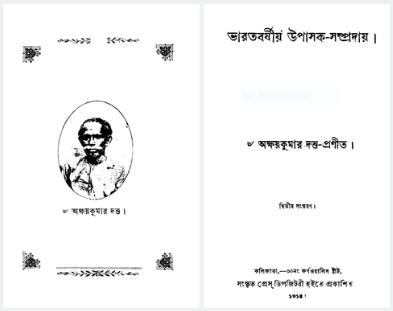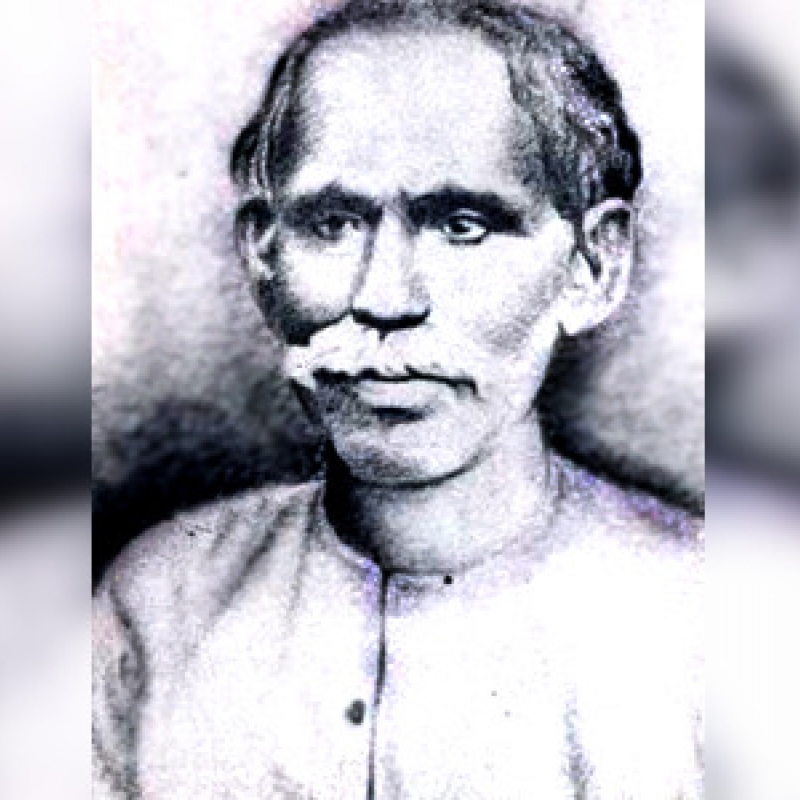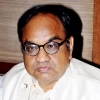Akshay Kumar Dutta (1820−86) was a progressive thinker from renascent Bengal who reinterpreted the West for Bengal and contributed to the evolution of Bengali prose. Today, his legacy and works seem to have been forgotten. [i] (Photo Courtesy: [Public domain])
Akshay Kumar Dutta (1820−86) remains an unsung hero from renascent Bengal (1817−57), a period that had its fair share of progressive thinkers and writers. Dutta not only possessed a sharp intellect, but the courage and conviction to articulate certain views or proffer arguments that proved rather objectionable and distasteful to people of his class in contemporary Calcutta (now Kolkata). He was behind the reformist Brahmo Samaj, renouncing its faith in the Vedas as pramana (proof) or an authentic source for Hinduism—a revolutionary step at the time. Dutta found the Vedas to be internally inconsistent—true for any work of human authorship—and argued instead that ‘nature’ itself and not any humanly authored text would be better qualified to be called a ‘scripture’.
Also Read | Rabindranath Tagore: The Unlikely Conservative on Hindu Marriages
With his friend and contemporary Iswar Chandra Vidyasagar (1820−91), Dutta represents an exceptional stream of thought and consciousness. Quite extraordinarily, at a time when religion had become the preferred mode of self-expression for western-educated Hindus, both Vidyasagar and Dutta extended their critique of contemporary Hindu faith and practice to the point of incredulous irreverence. While Vidyasagar argued that he had no need for a God who was powerless in preventing the merciless oppression of the weak and the innocent, Dutta insisted that honest human labour was likely to be as productive by itself as labour coupled with prayer. In true algebraic fashion, Dutta placed the value of faith and prayer as ‘zero’. In the case of Dutta, this would largely explain his gradual fading from public memory, even in his native Bengal.
Interpreting the West
In some important ways, Dutta carried forward a line of argument first advanced in colonial Bengal by Rammohun Roy (1774−1833), advocating the progressive replacement of archaic and outmoded forms of indigenous knowledge by those which were socially and professionally useful. Like Roy again, Dutta was an admirer of the English philosopher Francis Bacon (1743−1803) and his inductive line of reasoning, which supported scientific observation and experiments. He also followed Roy’s example of being an advocate of reforms for women. In the 1860s and 1870s, when conservatism had begun to take hold of the Hindu mind, Dutta was among the few to consistently support both widow remarriage and the legal abolition of multiple marriages among upper-caste Hindu males.

Dutta’s best-known work is a two-volume narrative on Hindu religious communities in contemporary India called Bharatvarshiya Upasak Sampraday (Courtesy: Digital Library of India [Public domain])
Dutta’s lasting contribution is his creative interpretation of the moral and scientific discourse of the contemporary West for the educated, middle-class Hindus of his day. Here, one can detect three major influences on his ideology—all of which originated from the ideas of contemporary or near-contemporary Western thinkers. First, there was the English deist, William Paley (1743−1805); second, the Scottish phrenologist, George Combe (1788−1858); and third, the French social theorist, Auguste Comte (1798–1857). From Paley, Dutta imbibed a deistic view of the world that spoke of a distant God uninterested in the day-to-day functioning of his creation. He then joined this argument to Combe’s ideas (from The Constitution of Man, 1828) of a set of perfect natural laws, the observance of which assured human happiness. Such ideas Dutta formulated in his two well-known treatises—Bahya Bastur Sahit Manavprakritir Sambandha Vichar (A Treatise on the Relationship between Human Nature and the External World, 2 volumes, 1851 and 1853) and Dharmaneeti (Principles of Morality, 1856). Later in his life, the ideas of Comte led him to a spell of agnosticism. It is interesting to note that unlike Bankimchandra Chattopadhyay, who was also briefly influenced by the Positivism of Comte, Dutta did not take Comte to be an atheist (niriswara). If at all, he debated the nature of God, not his very existence.
Education, Science and Divinity
The intellectual legacy of Dutta manifested itself broadly in two ways. First, he was pre-eminently an educationist and pedagogue who successfully ran schools and experimented with the teaching and dissemination of useful and practical knowledge, suitably adapted from the West. Arguably, he was also the first of his generation to invent a scientific vocabulary in the Bengali language for the teaching of elementary science. Like Vidyasagar, he was a successful author of school textbooks, for instance, Charupath (Elementary Lessons, 1853–54), Bhugol (Geography, 1851) and Padarthavidya (Physics, 1856). He also served as the editor of the well-known journal Tattwabodhini Patrika, the organ of the Tattwabodhini Sabha (founded in 1839) which, in its time, was widely read in educated Bengali society. As a writer and editor, Dutta contributed substantially to the improvement of Bengali journalism and the evolution of modern Bengali prose.
Also Read | Bankimchandra Chattopadhyay and Renascent Bengal
Second, Dutta’s argument that it was no less important to understand creation than the creator himself, reinforced the foundations of empirical science.
It is somewhat ironic that Dutta’s best-known work is a two-volume narrative on Hindu religious communities in contemporary India (Bharatvarshiya Upasak Sampraday). In the first volume, Dutta displayed great erudition and the ability to muster ideas and methodologies across disciplines like history, philology and religious studies. This work, believed to be based on the Orientalist H.H. Wilson’s classic account of Hindu religious sects and communities (A Sketch of the Religious Sects of the Hindus, 1828), actually went well beyond it. Dutta carried out extensive field-work and investigated extant Hindu religious communities. A third volume might well have emerged but for the untimely death of its author.
Also Read | Swami Vivekananda and the 'Woman Question'
For a good part of his life, Dutta struggled against poverty, illness and an unhappy conjugal life. Estranged from his wife and family, he spent the last years of his life as a virtual recluse in the village of Bali, a few miles from Calcutta. There, he pursued his consuming interest in science, studying and cataloguing extant fossil remains of plant and animal life. Friends visiting him at Bali were struck by the huge portraits of Rammohun Roy, Thomas Henry Huxley and Isaac Newton that adorned the walls of his drawing room. In hindsight, it might be reasonable to say that the choice of these portraits also testifies to the acumen and breadth of interest of a man whose work and memory has somehow not endured among his countrymen.
This article was also published on Firstpost.
Note
[1] This article is based upon Rabindranath Tagore’s rejoinder to Chandranath Basu, first presented as a paper read at the Science Association Hall, 1887, and subsequently published in the Bengali journal Bharati O Balak, Bhadra-Aswin, 1294 BS (August–September, 1887). Excerpts from this paper are available in English translation in Social and Religious Reform: The Hindus of British India (Delhi: Oxford University Press, 2003), 156–61.













